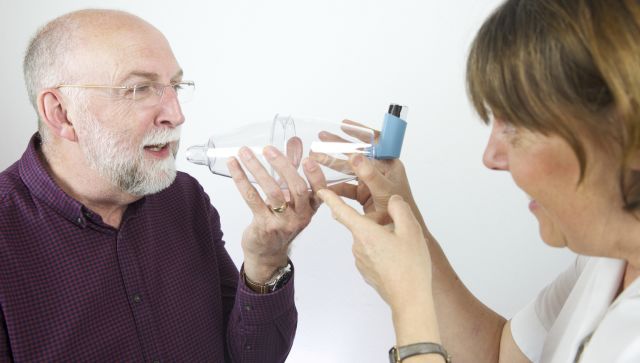Updated on September 9, 2024
Chronic obstructive pulmonary disease (COPD) is a common condition that involves the tightening and chronic inflammation of the airways. It also involves damage to the tiny air sacs of the lungs, called alveoli. The symptoms of COPD are manageable, although they typically get worse over time.
COPD is preventable, but there’s no known cure for the disease. More than 80 percent of cases of COPD are linked to smoking.
What is COPD?
Technically, COPD includes two medical conditions. Most people with the disease have both of them:
- Chronic bronchitis: This involves the inflammation, thickening, and tightening of the airways. It often comes with excessive mucus production.
- Emphysema: This involves the destruction and scarring of the lung’s air sacs, which makes it harder for the lungs to take in oxygen and release carbon dioxide.
People with asthma are sometimes diagnosed with COPD as well if their case is especially severe and their airway tightness doesn’t improve with asthma treatments.
How is COPD diagnosed?
If your healthcare provider (HCP) suspects that you have COPD, they’ll ask you to complete a pulmonary function test, or a PFT. A PFT involves taking a long, deep breath and then blowing out into a tube with as much force as you can manage.
The tube will be connected to a machine that measures lung strength. If the test reveals that your lungs could be weak or damaged, your HCP will give you an inhaled medication to open up your airways. Then, they will let you repeat the test to see if your results improve.
People with asthma tend to score better after taking the medication, while those with COPD typically experience just a slight improvement.
Your HCP might also order:
- A chest X-ray: An X-ray is used to see if another condition like heart failure or pneumonia is causing your symptoms instead of COPD.
- An arterial blood gas: This blood test is drawn from the artery in your wrist and measures your “blood gases,” which include oxygen and carbon dioxide.
- An exercise test: You may be asked to perform an exercise routine like walking or biking for a certain amount of time while your HCP monitors your breathing difficulty, heart rate, and oxygen level.
Your HCP will also perform a physical assessment and ask you if troubling symptoms like shortness of breath have been interfering with your ability to perform everyday activities.
Symptoms of COPD
Diagnostic tests like a PFT can pick up on COPD before you start feeling symptoms. In fact, it’s common to experience no symptoms at all with early-stage COPD. But as the condition worsens, you may develop:
- Coughing and spitting up lots of phlegm (mucus)
- Wheezing
- Shortness of breath
- Fatigue or exhaustion
- Frequent respiratory infections
If you smoke tobacco, your symptoms will likely worsen quickly if you continue to smoke.
What causes COPD?
Smoking is the top cause of COPD. Quitting smoking can lower your risk of developing the disease or, if you already have COPD, can help you manage your symptoms.
In general, long-term exposure to air that’s contaminated with dirt or chemicals can lead to COPD. That can include secondhand smoke, industrial chemicals that you inhale on the job, or concentrated air pollution in your town.
In about two to three percent of cases, COPD is caused by a condition called alpha-1 antitrypsin deficiency. Even though this genetic deficiency is rare, everyone who’s diagnosed with COPD should get tested because alpha-1 antitrypsin deficiency may put you at risk for other health problems like liver damage.
COPD treatments
If you smoke and you are diagnosed with COPD, the first step of your COPD treatment plan is to quit tobacco. There are many methods to choose from when quitting smoking, including medications, nicotine replacement, and talk therapy. If you’ve tried quitting in the past without success, don’t give up. Ask your HCP about other methods that could work for you.
Additionally, your HCP will prescribe inhaled medications such as bronchodilators to ease your COPD symptoms and slow the progress of the disease. These drugs help open up your lungs. They may be combined with inhaled corticosteroids to help ease inflammation in the airways.
As COPD progresses, you may need to start using portable oxygen. Oxygen is stored in a tank, travels through a thin tube, and passes into your lungs through prongs that sit in your nostrils.
Some people might also need surgery like a lung transplant or a partial lung removal if their symptoms stop responding to medications and oxygen.
Resources for those living with COPD
If you have COPD, there are people and resources available to help you manage your condition:
- The COPD Foundation offers support groups and has an information line that can be reached at 1-866-316-2673.
- Sharecare offers resources for quitting smoking, including advice on making a quit plan, tips for quitting permanently, and can even put you in touch with an HCP who specializes in addiction medicine.
With the proper support, planning and lifestyle changes, it’s possible to stay active and live well with COPD.


